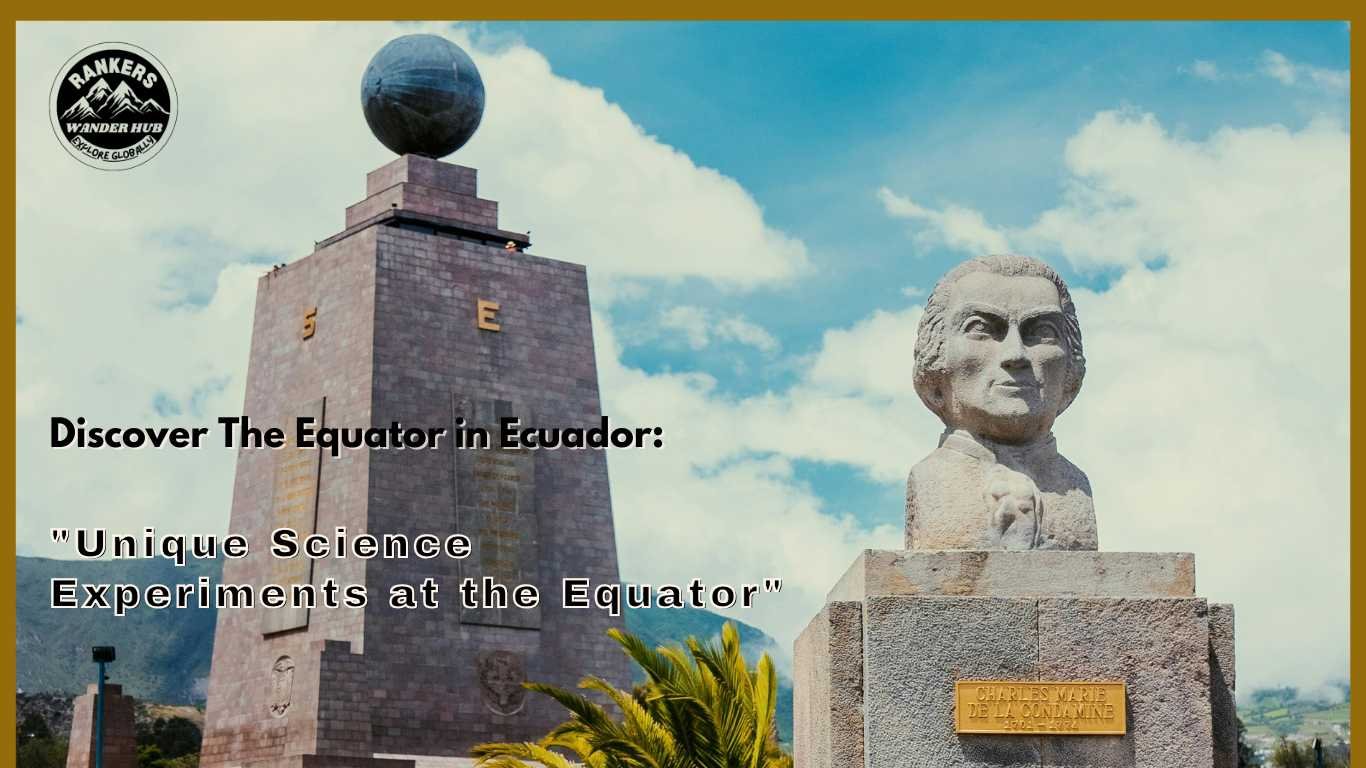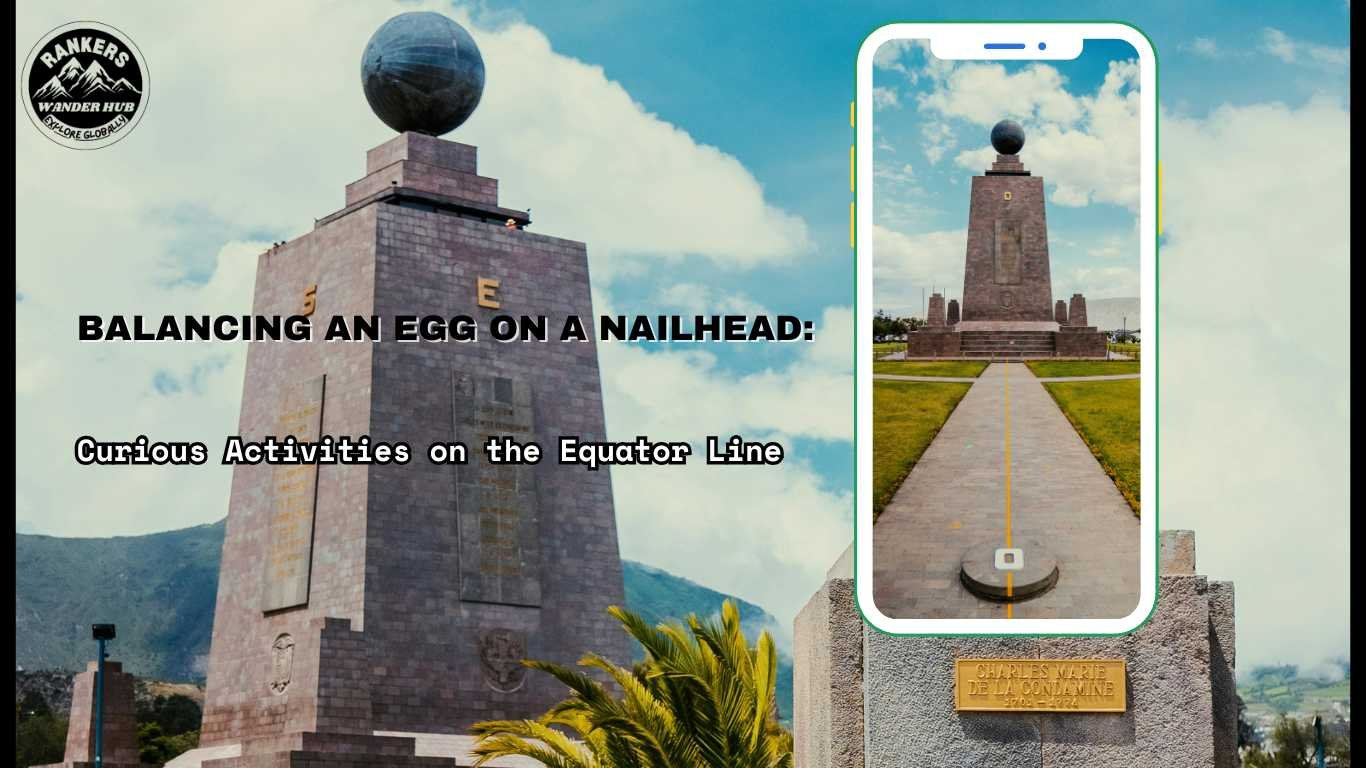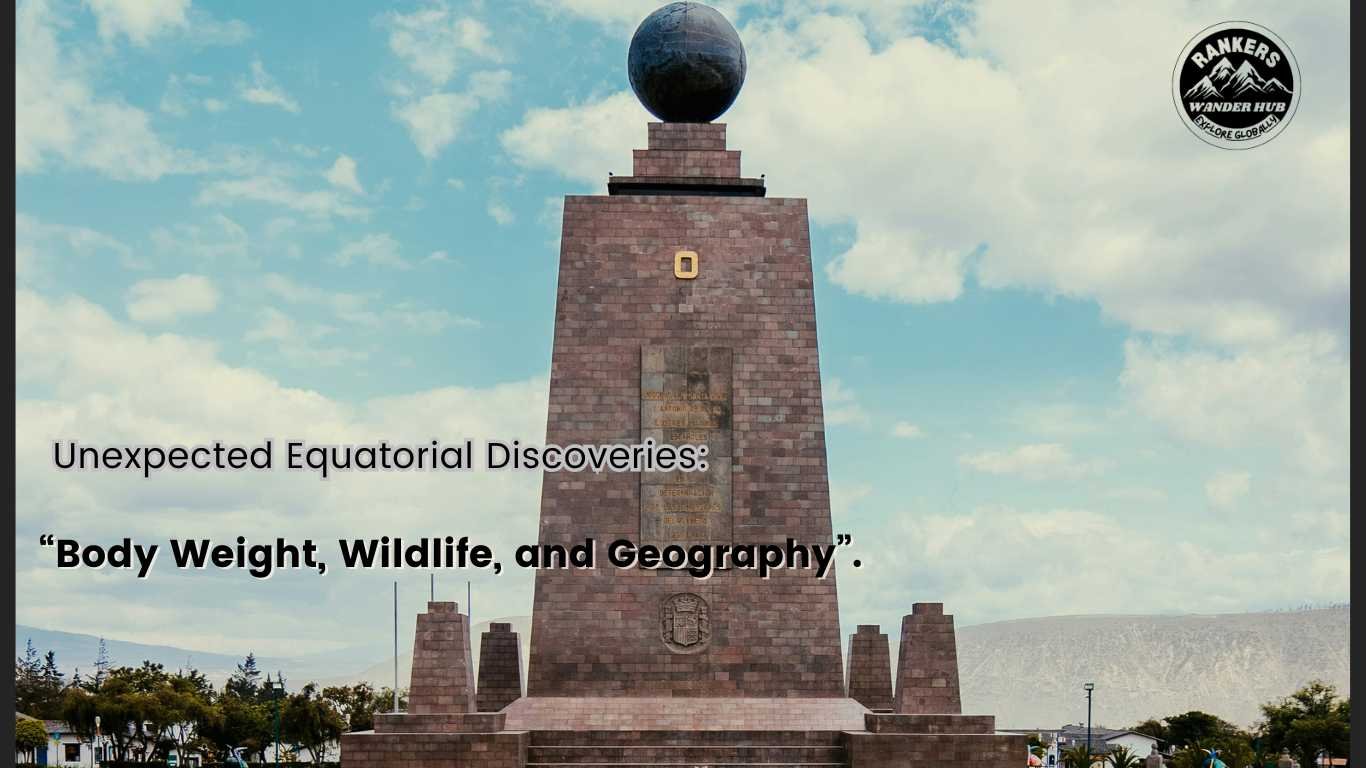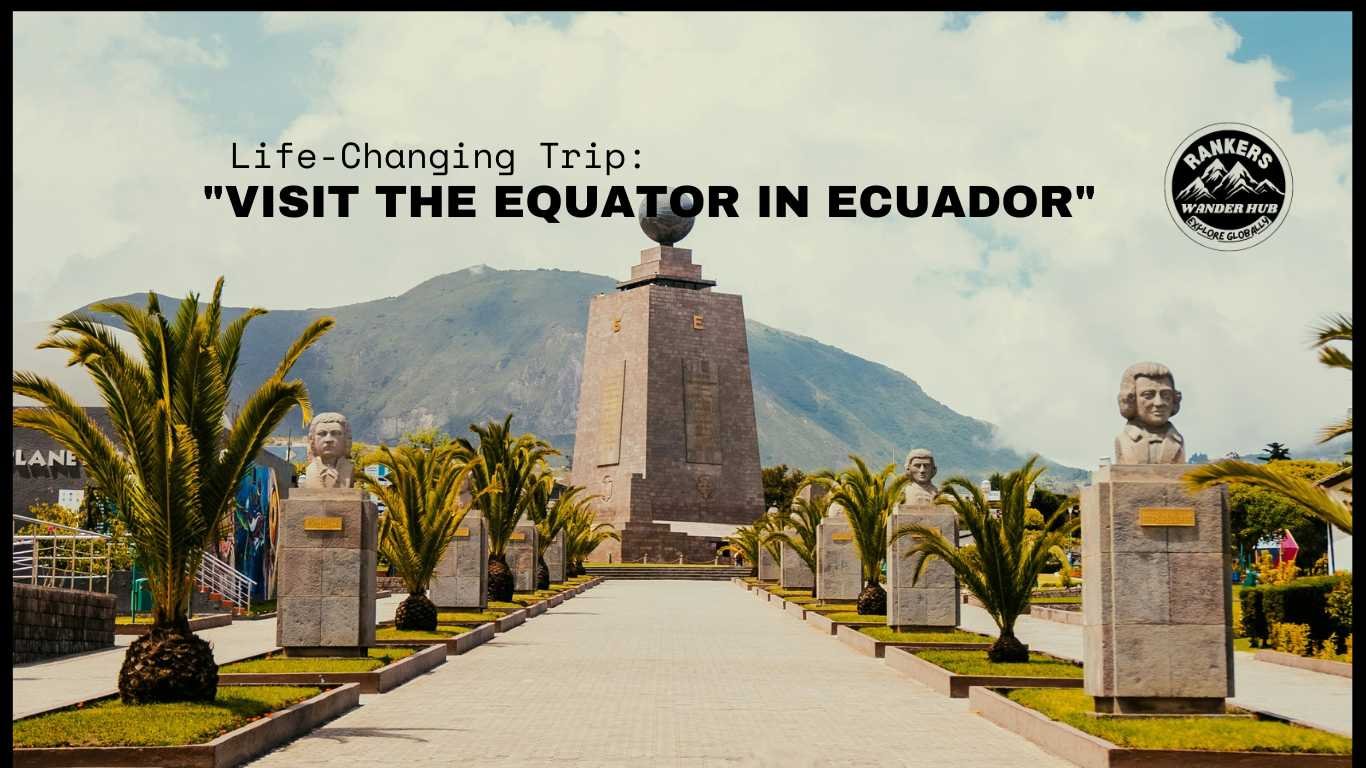How to Visit the Equator in Ecuador
Exploring the Equator in Ecuador provides a one-of-a-kind travel experience that combines science, history, and adventure. From standing on the Latitude 00°00’00” line to testing unique gravitational effects, this journey allows travelers to experience the wonders of the equator firsthand. Key stops like Mitad del Mundo and Museo Intinan offer immersive, interactive attractions that highlight Ecuador’s rich geographical significance. Here’s everything you need to know for an unforgettable equator trip in Ecuador.
Finding the True Equator in Ecuador
Quito, Ecuador is the ideal starting point for anyone wanting to visit the equator, as this city offers close proximity to major equatorial landmarks. During a city tour with my friend, Deidra, and our guide, Gabby, we ventured northeast of the capital to visit the iconic Mitad del Mundo monument, also known as the Middle of the World.
This popular monument is located along a stretch of Ecuador known for its alignment with the equator line. Early measuring techniques, however, were imprecise, and the original monument constructed in the early 1900s was positioned slightly off the exact line. The new structure, built in 1979, maintained the same location despite advancements in technology. Interestingly, GPS measurements have since shown that the real equator line lies a few hundred feet north, over a ravine.
If you’re interested in experiencing the true GPS 00°00’00” line, head to the nearby Museo Intinan, a private museum located on the actual equator. Known for its hands-on exhibits, Museo Intinan ROCKS for travelers eager to learn how the equator affects balance, gravity, and even body weight.
Unique Science Experiments at the Equator
At Museo Intinan, our tour guide introduced us to a range of scientific experiments, including a demonstration of the Coriolis effect. The Coriolis effect explains how water swirls differently depending on the hemisphere—clockwise in the southern hemisphere and counter-clockwise in the northern hemisphere. This phenomenon also impacts larger natural forces like hurricanes, which rotate in opposite directions depending on the hemisphere.

To illustrate this effect, our guide used a sink basin filled with water, then emptied it above, below, and directly ON the equator. Each time, the water behaved differently, flowing straight down without swirling when poured directly on the equator. Although some websites argue this could be a trick related to the way the plug is pulled, MIT researcher Ascher Shapiro demonstrated in 1962 that the Coriolis effect is real. Though it’s a tiny force compared to gravity, Shapiro’s experiment, which used a perfect basin with still water, showed that water indeed flows in opposite directions in the two hemispheres.
Curious Activities on the Equator Line
One of the more entertaining activities at Museo Intinan involved balancing an egg on a nailhead. Our friend Deidra succeeded in balancing an egg on her first try, earning her a certificate as a reward. This popular equatorial activity is thought to be easier on the equator line, but some claim it’s simply a myth. Nevertheless, trying our luck with this balance test added a fun element to our visit.

Another interactive experiment focused on strength. Our guide had us press our thumb and pointer finger together, and then tried to force them apart. Standing on the big red line marking the equator, I felt noticeably stronger than when I was standing off the line. Activities like these make visiting the equator an unforgettable, hands-on experience.
Discovering Mitad del Mundo: Ecuador’s Middle of the World
The Mitad del Mundo monument is an essential stop for any visitor to Ecuador. Known as the Middle of the World, this site is famous for its tall monument with a yellow line marking the historic equator position. Surrounding the monument, Ciudad Mitad del Mundo is a bustling village where travelers can browse Equator-related souvenirs, relax in quaint cafes, and visit a planetarium. This lively village celebrates the French Geodesic expedition, an effort from 1736 that helped to identify Ecuador’s unique equatorial alignment.
While GPS technology later revealed that the actual equator line runs a few hundred feet away, Mitad del Mundo remains a tourist favorite. Admission is $5, and opening hours are from 9 am to 5 pm or 6 pm daily. Standing near the 100-foot monument, visitors can feel a connection to the past, even as modern calculations have shown this landmark is slightly off the real equator line.
Intinan Museum – Discovering the Real Equator in Ecuador
Located just a five-minute walk from the Middle of the World is the Museo de Sitio Intinan, a quieter and more intimate alternative to the main monument. Intinan features a red line marking the real equator line, with informative signs and a guide included in the $5 admission. The outdoor museum offers insights into the lives of Ecuador’s natives, including exhibits on Amazonian indigenous people.
One of the museum’s most intriguing displays is the shrunken head exhibit, an eerie yet fascinating aspect of Ecuadorian indigenous culture. The huge wall here illustrates how some native tribes in the deep jungle once believed that shrinking the head of an enemy could trap the enemy’s spirit. Although a bit unsettling, this display offers a glimpse into ancient traditions.
At Intinan, visitors can participate in experiments that demonstrate unique properties at the equator. From balancing an egg on a nail to observing the Coriolis effect, the museum provides a fully interactive experience. Open daily from 9:30 am to 5 pm, Intinan Museum is a must-visit for those looking to experience the real equator.
Getting to the Equator from Quito
Traveling from Quito to the equator is relatively straightforward, with several options available. If you’re looking for flexibility, hiring a driver is ideal. The 16-mile (or 25 km) journey north of Quito takes about 30 minutes, and most hotels can help arrange transportation. Having your own driver gives you the freedom to set your own schedule, and you can add a stop at the Pululahua Geobotanical Reserve, a nearby destination worth visiting.
For a hassle-free option, consider an organized tour. Many of the highest-rated tours handle all the planning, making it an easy way to visit the equator from Quito. For budget travelers, taking a bus is the cheapest option, though it requires changing buses. Start with a Metrobus from Quito to The Ofelia (the last stop on the line), then transfer to another bus heading to Mitad del Mundo.
Are the Equator Experiments Real?
Visitors often debate whether the equator experiments are grounded in science or simply entertaining nonsense. Do the effects truly carry weight, or are they relative to how close one is standing to the big line? This mystery adds a layer of intrigue to the Museo Intinan experience, leaving travelers with a sense of wonder.
Unexpected Equatorial Discoveries: Body Weight, Wildlife, and Geography
One display at Museo Intinan explains that body weight changes slightly on the equator. Although this may raise doubts, standing directly on the Latitude 00°00’00” line indeed causes a minor change in weight.
While exploring the property, we also noticed a polka-dotted hen wandering freely. Initially, we weren’t sure if it was a hen, but later discovered it was a Guinea Fowl, thanks to a helpful comment from Flory.

A large globe on-site illustrates the path of the equator across Ecuador and into Isabela Island in the Galapagos. While we didn’t venture that far north during our trip, it was fascinating to see how the equator intersects different parts of Ecuador.

